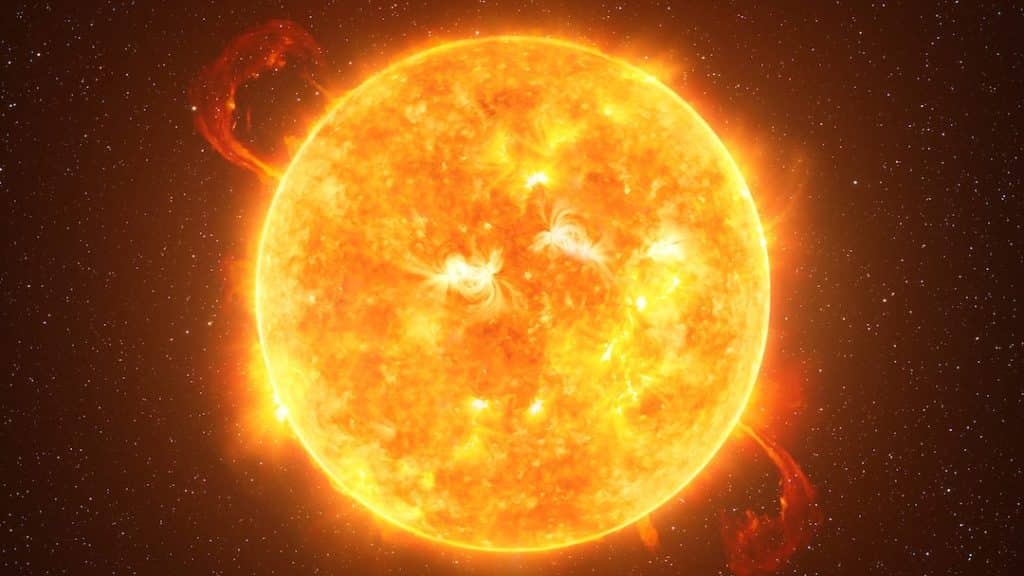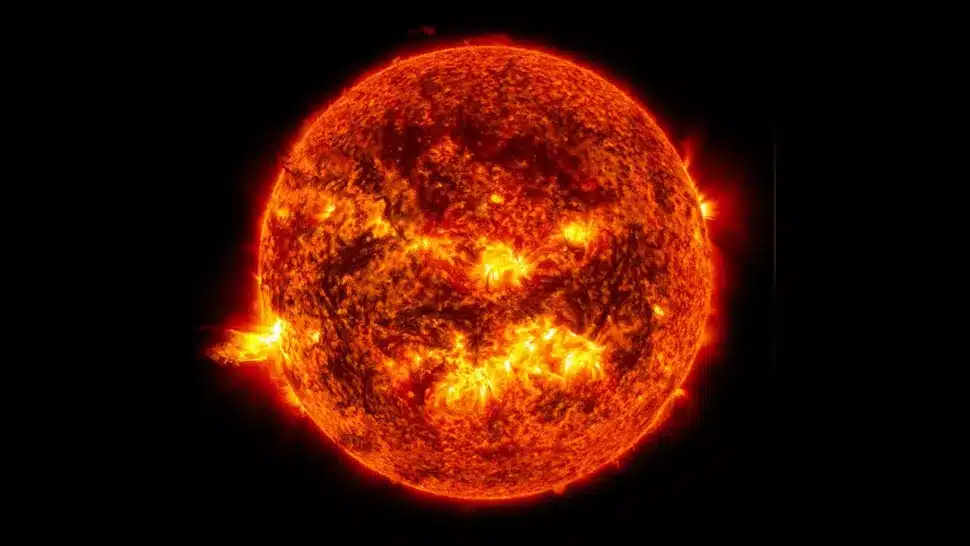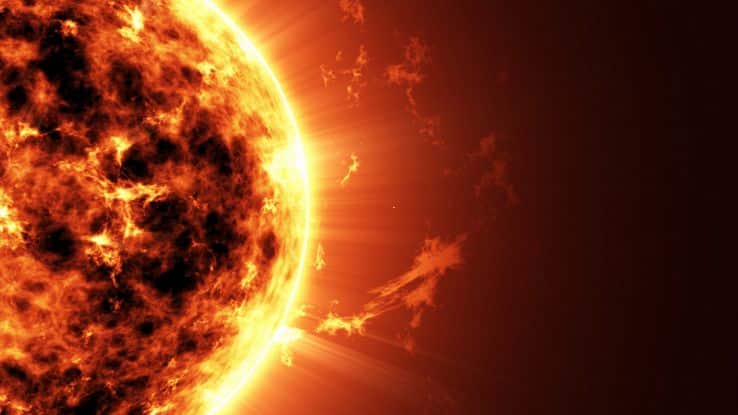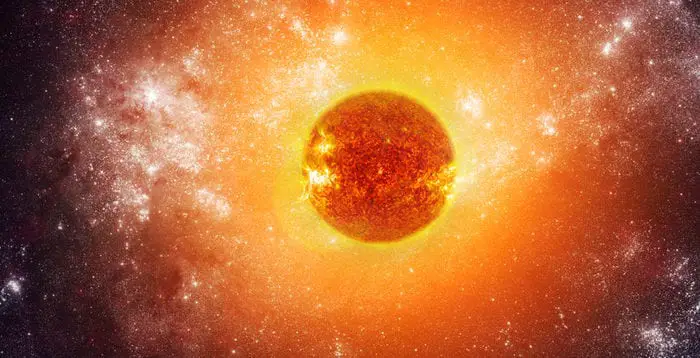The heartbeat of Sun it is a complex and multirhythmic phenomenon, which beats in different ways depending on the various periodicities. We don’t know what drives many of these solar heartbeats, but new discoveries revive and strengthen a link to the Solar System’s planets.
The reason for the heartbeat of the Sun
The Sun’s 11-year activity cycle – known as the Schwabe cycle – can be at least partially explained by a gravitational interaction between the Sun and Venus, Earth and Jupiter, new research suggests.
There are likely other driving factors at play as well. But the controversial planetary hypothesis, as it is known, is too perfectly synchronized with the Schwabe cycles to be discounted, according to the team of researchers behind the new study, led by Frank Stefani, a physicist at the Helmholtz-Zentrum Dresden-Rossendorf laboratory. in Germany.
The Sun’s activity, they found, is mostly internally driven, but external influences can also play a role: “You can think of it as a giant dynamo,” says Stefani.
While this solar dynamo itself generates an activity cycle of about 11 years, we think that the influence of the planets then intervenes in the functioning of this dynamo, repeatedly giving it a small push and thus forcing the unusually stable rhythm of 11.07 years on the sun.”
About every 11 years or so, the Sun undergoes a dramatic series of transformations as its activity levels fluctuate. At solar minimum, it shows the least activity. Then, in the next few years, it will gradually increase. This manifests as an increase in sunspots, solar flares, and coronal mass ejections, up to the peak known as solar maximum (we are close to solar maximum now).

At solar maximum, the Sun’s poles reverse their polarity and activity declines for several years until the next solar minimum before rising again to another maximum and another pole reversal. This is the Schwabe cycle and it repeats every 11 years or so, although there is little variation in the length of each cycle.
So where do the planets come from?
Well, every 11.07 years, around the time of solar minimum, Venus, Earth and Jupiter form a line, briefly increasing their gravitational pull on the Sun in one direction. It’s only a weak effect, unlikely to impact the sun’s interior, but it could play a role in driving solar cycles, synchronizing the internal dynamo with regular cycles.
Stefani and her colleagues have been investigating this potential link for some time, and now they believe they have found new evidence in its favor: giant swirling waves in the Sun called Rossby waves, detected only recently for the first time, similar to Rossby waves on Earth that drive the atmospheric pressure system: “Now we have found the underlying physical mechanism,” says Stefani.
“We know how much energy is needed to synchronize the dynamo, and we know that this energy can be transferred to the sun by so-called Rossby waves.
“The nice thing is,” he continues, “that we can now explain not only the Schwabe cycle and the longer solar cycles, but also the shorter Rieger cycles that we hadn’t even considered before.”
Rieger cycles are 150 to 160 day cycles of flare activity on the Sun and have also been linked to Rossby waves after extensive examination.

The researchers found that not only does the Venus-Earth-Jupiter alignment coincide with solar cycles, but the alignment of any two of the three planets has enough gravitational pull to trigger Rossby waves. And even better: these alignments coincide with Rieger cycles.
The team ran mathematical models to verify their results and found that they could replicate the Schwabe and Rieger cycles with their planetary alignments.
There was something else too. Every 193 years or so, the strength of the sun’s magnetic field fluctuates, which researchers believe is the Suess-de Vries cycle.
The Suess-de Vries cycle, they calculate, occurs when the Sun’s 19.86-year periodic motion around the Solar System’s center of gravity aligns with the Hale cycle – a 22.14-year double Schwabe cycle. And this cycle also emerged in the team model.
Now, of course, the Sun is very large and very complex, so the planets – if they are involved – are only part of the picture. But the coincidences, researchers say, are simply too precise to be just coincidences.

“We will probably only be 100% certain when we have more data,” says Stefani: “But the arguments in favor of a planet-driven process are now very strong.”
At least one thing is clear: there is still a lot of work to be done because, remember, models are only rough approximations that can easily be wrong.
The team’s research was published in Solar Physics.
How the heartbeat of the Sun was discovered
A team of researchers has made an unusual discovery: a series of radio bursts resembling “heartbeats” emanating from a solar flare thousands of kilometers above the Sun’s surface – and they’re still trying to figure out what caused them.
As detailed in a new paper published in the journal Nature Communications, the international team of scientists has pinpointed the location of intense bursts of radio waves in a C-class solar flare, a strong eruption of electromagnetic radiation.
The research could help scientists make sense of the disturbances occurring on the surface of the Sun. Yet many questions remain.
“However, the origin of these repetitive patterns, also called quasi-periodic pulsations, has long been a mystery and a source of debate among solar physicists,” Yu added.

The observations are from 2017 data collected by the NJIT radio telescope, the Expanded Owens Valley Solar Array (EOVSA) in California. In it, the team found patterns of solar flares that repeated every 10 to 20 seconds, which the team likened to a “heartbeat.”
While these pulses, known as quasi-periodic pulsations (QPPs), are not themselves rare, the team discovered an unexpected secondary source at a point where layers of electrical currents break down and reconnect with each other on the Sun’s surface, a process believed to fuel rockets.
“This is the first time that a quasi-periodic radio signal located in the reconnection region has been detected,” Yu said in the statement. “This detection can help us determine which of the two sources caused the other.”
The researchers’ analysis revealed bubble-like islands of magnetic current that can influence the amount of energy released during an eruption, research that could allow us to better understand some of our solar system’s most powerful explosions.
#mysterious #heartbeat #Sun